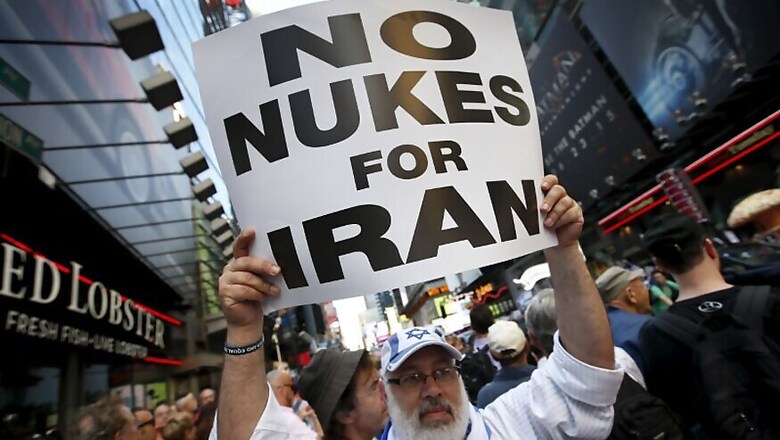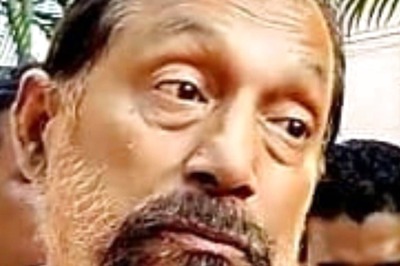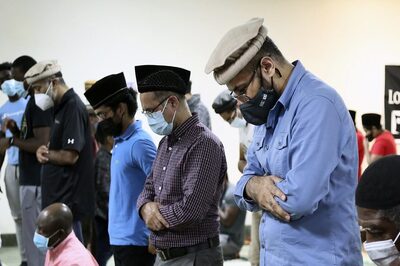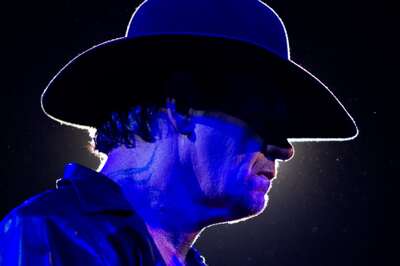
views
Vienna: The landmark 2015 nuclear deal Iran made with major world powers slashed the scope of Tehran's atomic activities and created what the United Nations nuclear watchdog calls "the world's most robust verification regime."
But U.S. President Donald Trump, a long-time critic of the deal, has pulled out of it, saying that the deal was rotten at its core and was not enough to stop Iran from pursuing nuclear weapons.
Here is what a U.S. withdrawal would likely mean for the U.N.’s nuclear watchdog and its policing of Iran’s nuclear activities.
THE AGREEMENT
A central aim of the agreement – signed by the United States, Russia, China, Germany, France and Britain - was to ensure Iran would be at least a year away from amassing enough nuclear material for a bomb. The deal made Tehran, among other things, sharply cut the number of centrifuges, machines that enrich uranium, it has in operation and slash its stock of enriched uranium.
It also imposed a strict limit on the purity Iran enriches uranium to, far below the level at which it could be used in atom bombs.
In signing the deal, Iran also agreed to comprehensive monitoring of its nuclear facilities and related sites by the U.N.’s International Atomic Energy Agency. That includes daily access by inspectors to and continuous monitoring, such as by camera feed, of its two underground enrichment sites at Natanz and Fordow.
The deal required Iran to implement the U.N. nuclear watchdog's Additional Protocol, which provides inspectors with wide-ranging access to information on Iran's nuclear activities and the ability to inspect any site it deems necessary to verify that those activities are peaceful.
The deal - officially known as the Joint Comprehensive Plan of Action, or JCPOA - requires Iran to grant long-term visas and provide proper working spaces to 130 to 150 designated U.N. nuclear inspectors.
ARE INSPECTIONS ANYTIME, ANYWHERE?
No. U.N. inspectors must present to Tehran their reason for wanting to visit a site that Iran has not declared as part of its nuclear programme.
The U.N. nuclear watchdog does often conduct snap inspections. The head of the watchdog in March said that since the JCPOA has gone into effect the agency has carried out more than 60 so-called complementary access inspections. Many of those are done at short notice, diplomats familiar with the agency's work say.
The U.N. agency says it has had access to all the sites it has needed to visit and details of inspections are confidential. Iran and the U.N. nuclear watchdog say Iran is implementing its commitments under the deal.
WHAT HAPPENS IF TRUMP PULLS OUT?
If Trump does not renew waivers of U.S. sanctions against Iran by May 12, as he has threatened to, it could unravel the deal by removing one of the main reasons Tehran signed up in the first place.
According to the text of the deal, Iran stated that if sanctions were reinstated it “will treat that as grounds to cease performing its commitments under this JCPOA in whole or in part."
The three European signatories and the European Union, which also signed the deal, hope to keep the agreement alive even if the United States pulls out.
Iran's president has warned there would be "severe consequences" if Trump pulled out of the deal. But Iran has also discussed salvaging the deal.
TOTAL COLLAPSE
If Iran pulled out of the deal completely, it would dramatically reduce the U.N. nuclear watchdog’s ability to monitor the country’s activities.
The U.N. agency says its presence in Iran in terms of inspectors' calendar days doubled to 3,000 in 2017 compared to 2013. It adds that its “verification activities conducted” have increased 152 percent over that time frame, without specifying total numbers.
U.N. inspectors would still monitor Iran’s declared nuclear facilities because Tehran is a signatory to the 1970 nuclear Non-Proliferation Treaty. But, U.N. inspectors would no longer have daily access to the Fordow and Natanz sites, for example, and would have more limited oversight of areas including uranium mining and research without nuclear material.
Some Iranian officials have even threatened to withdraw from the Non-Proliferation Treaty, a drastic move that would involve expelling U.N. inspectors altogether as North Korea did in 2009.
CUSHIONING THE BLOW
If Iran did pull out of the deal, the U.N. nuclear watchdog would hope that Tehran would continue to apply the protocol allowing it to retain much of its power to inspect any undeclared site it needs to.
There is a precedent for this, even though Iran has not ratified the Additional Protocol since it signed it in 2003: Iran implemented it temporarily from 2003 to 2006.



















Comments
0 comment